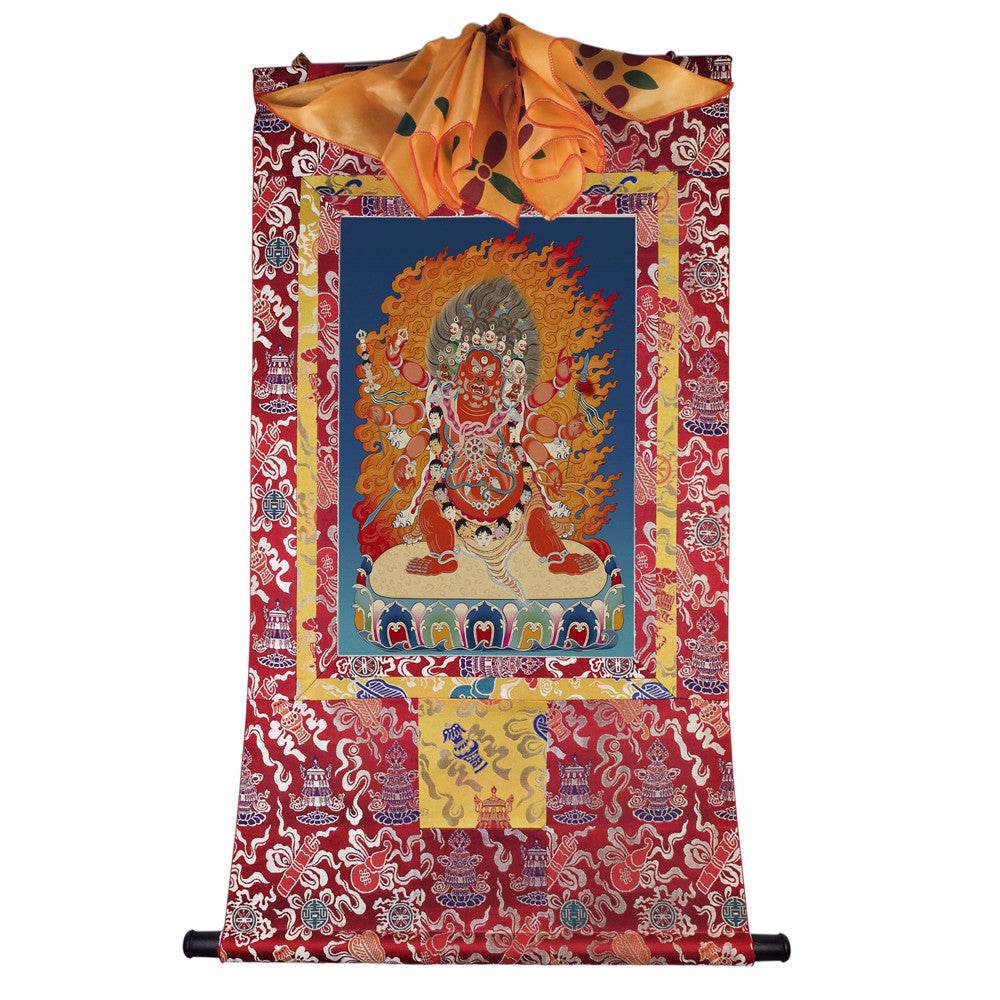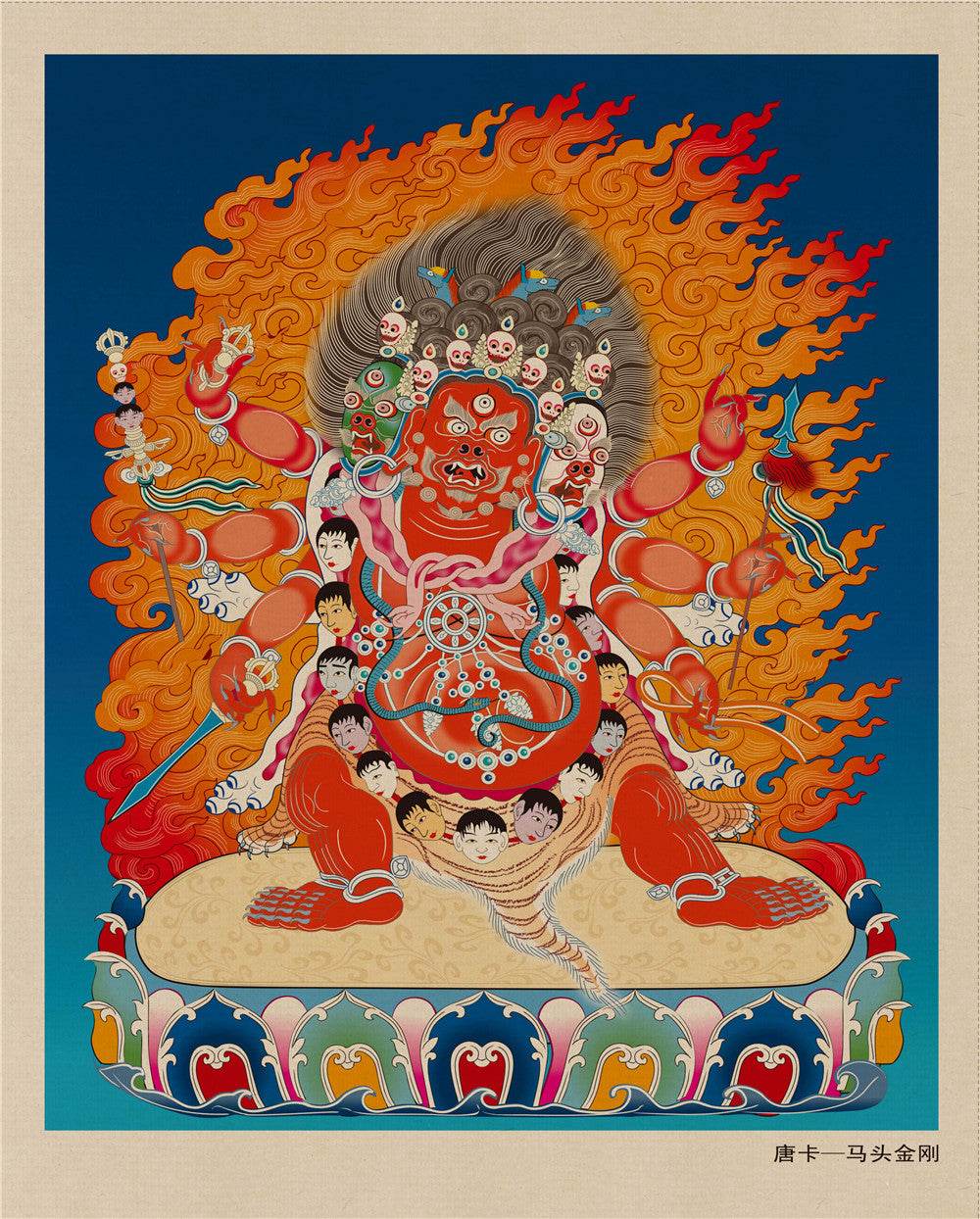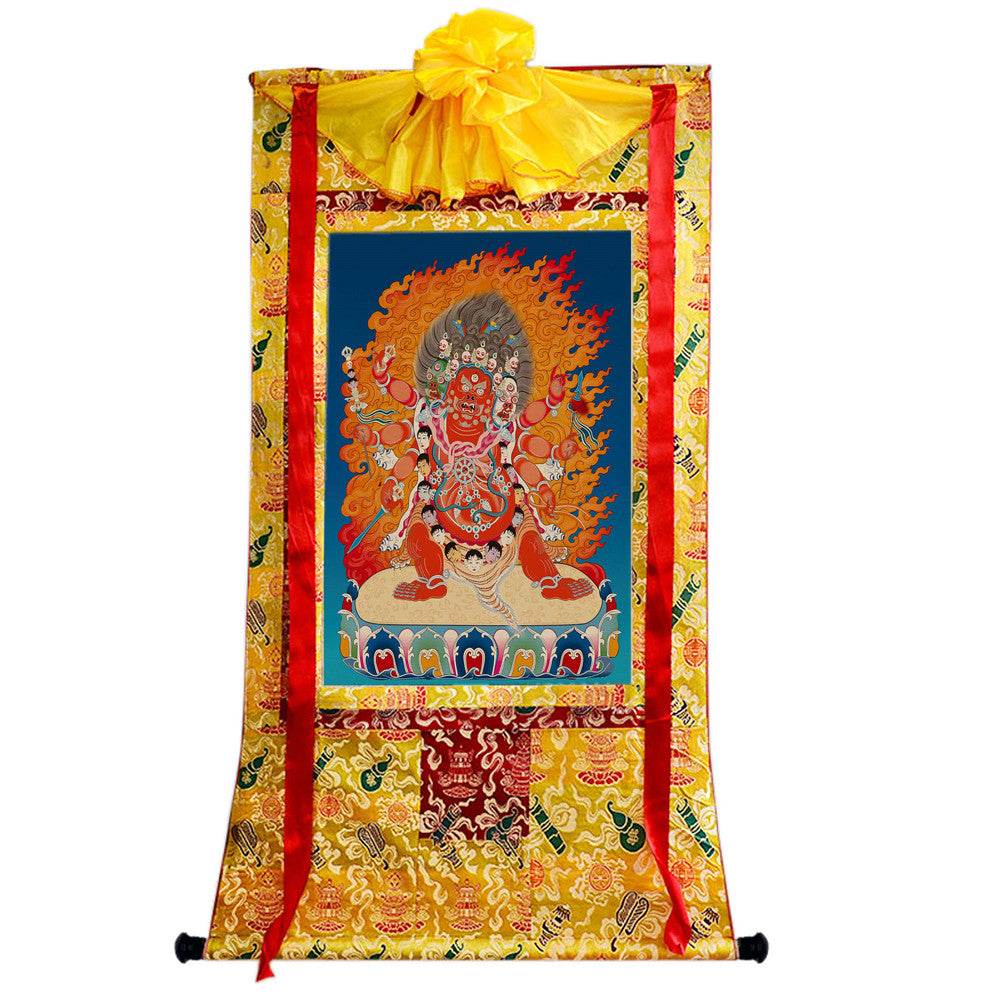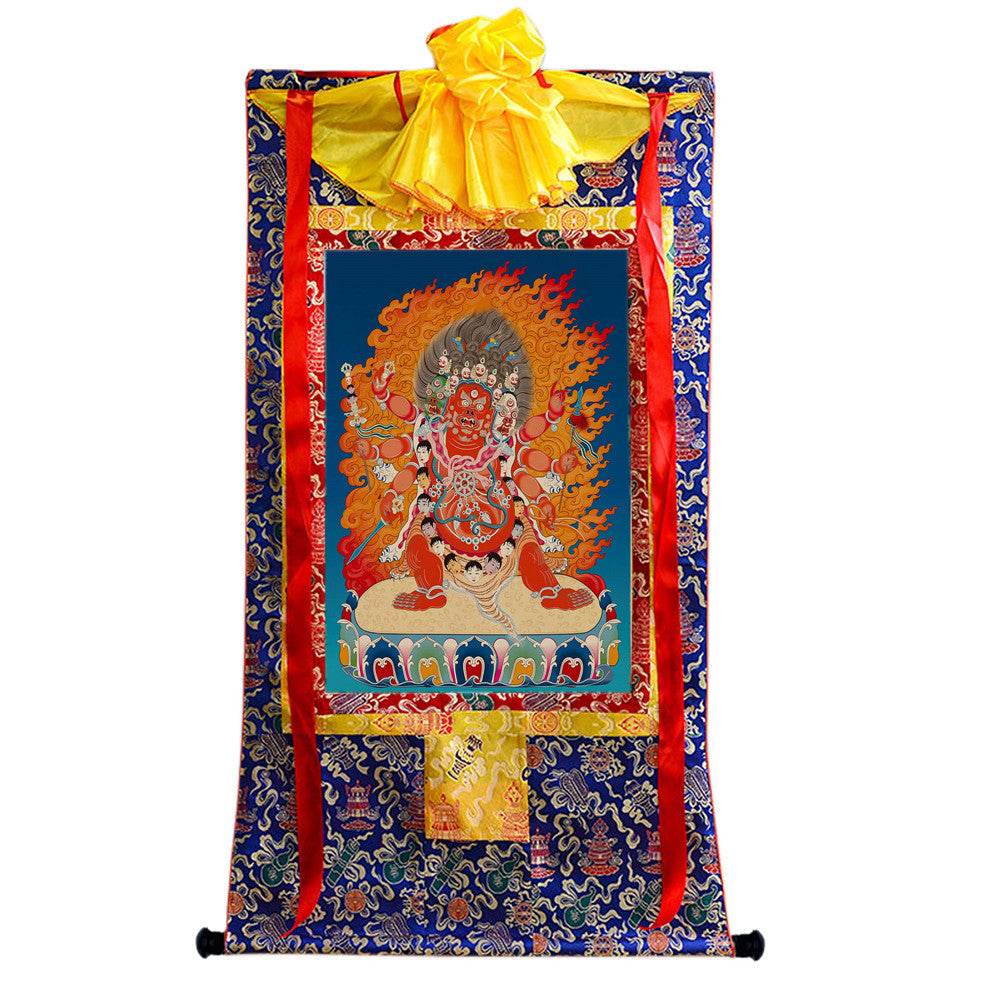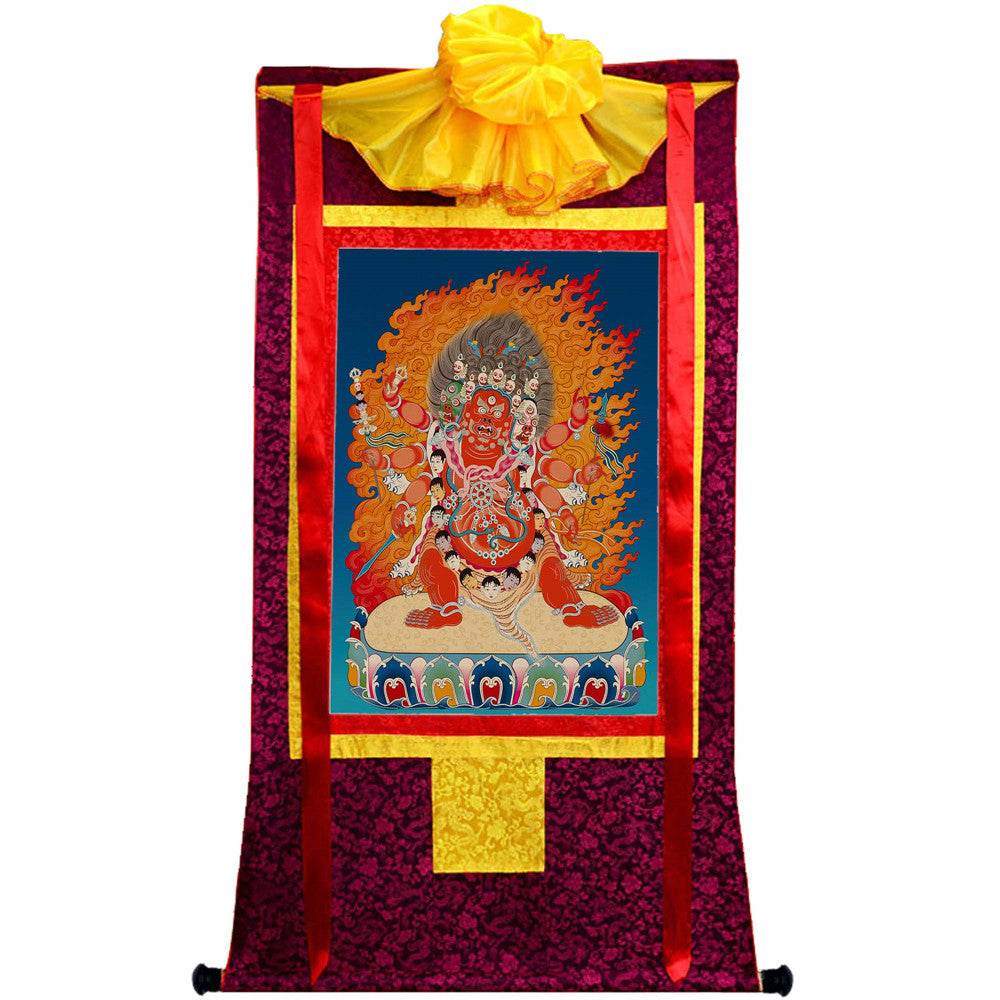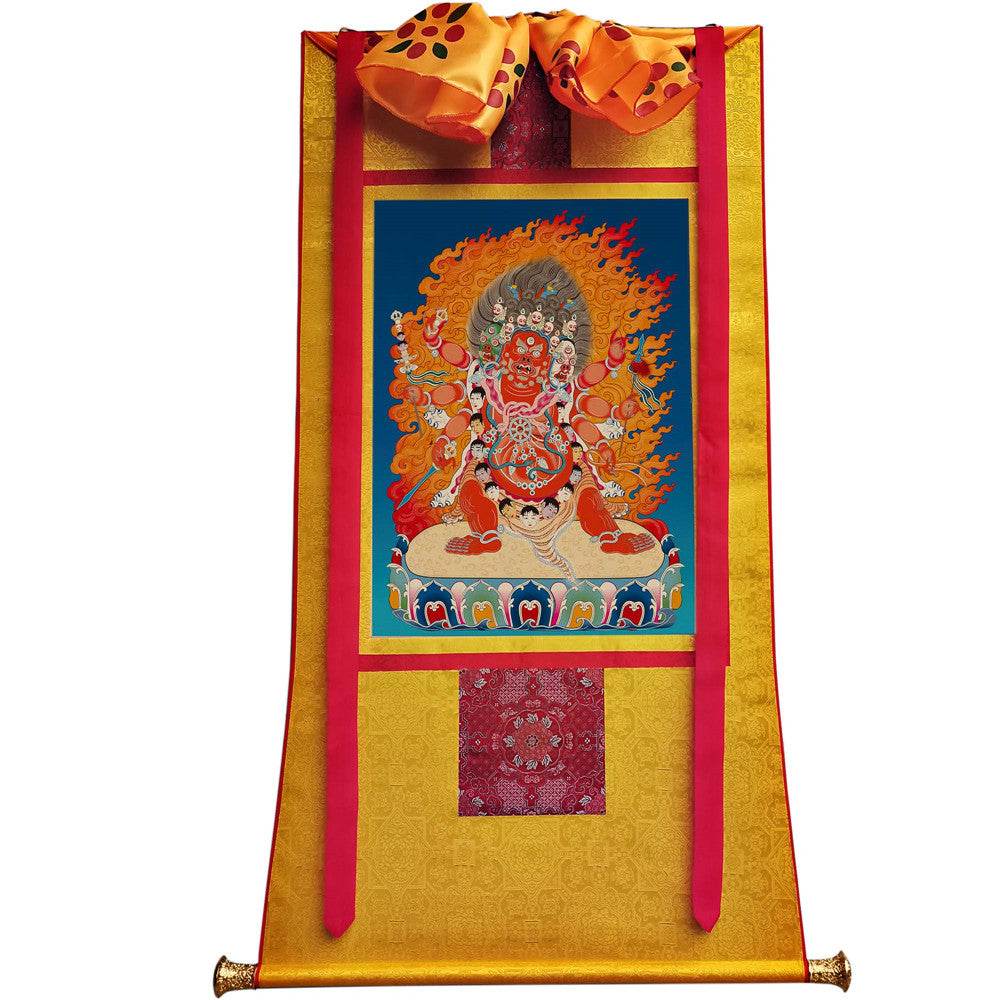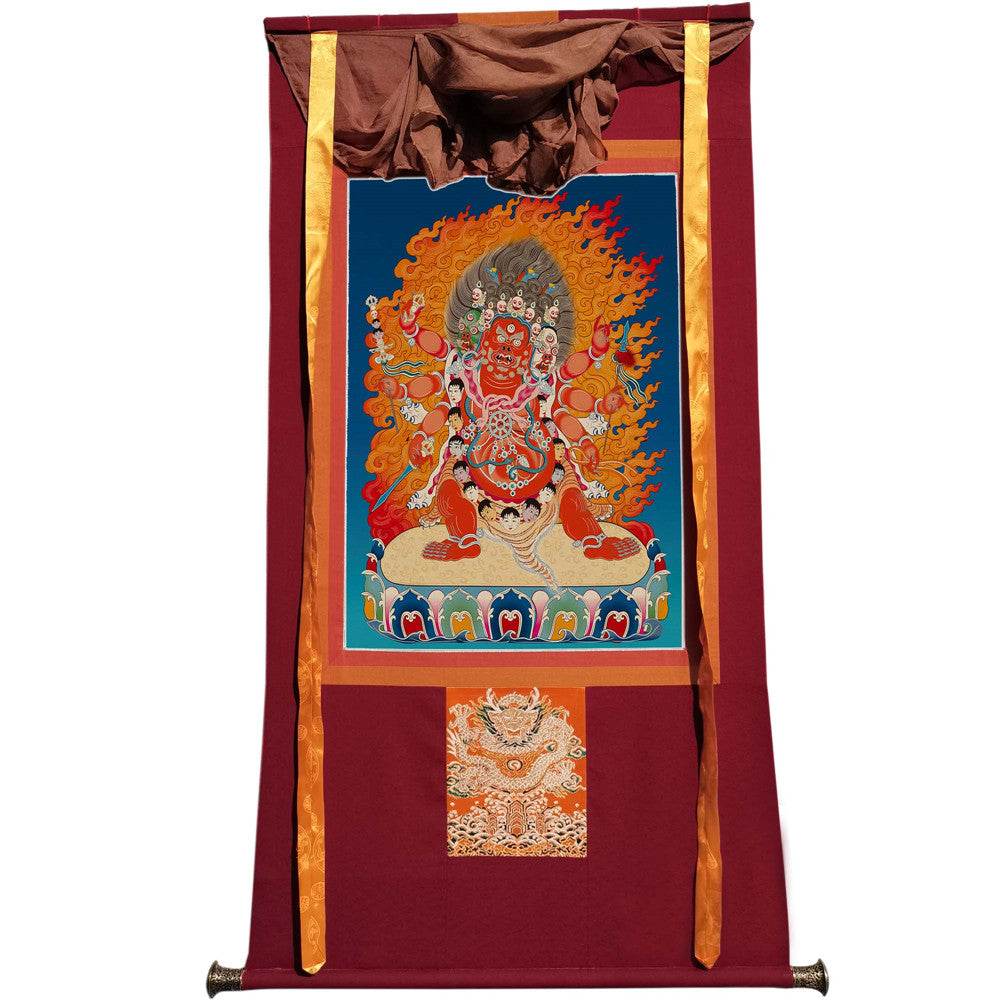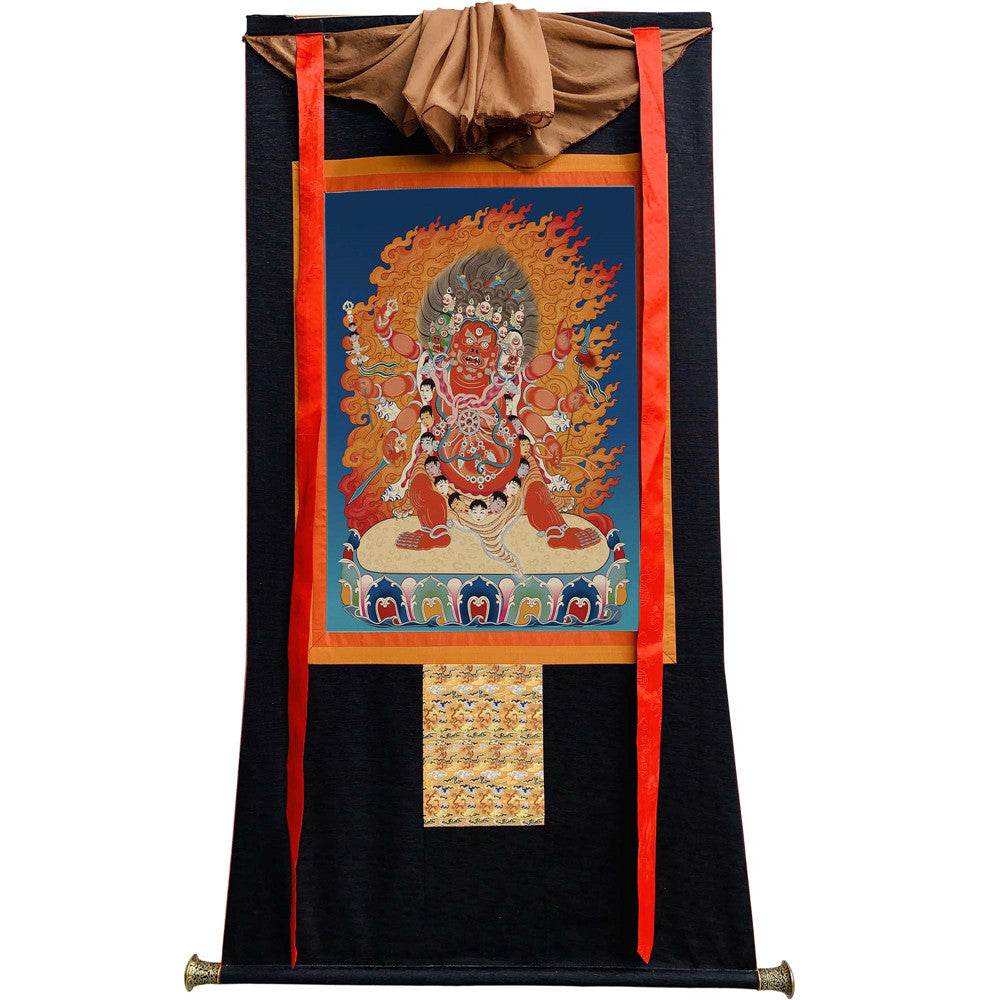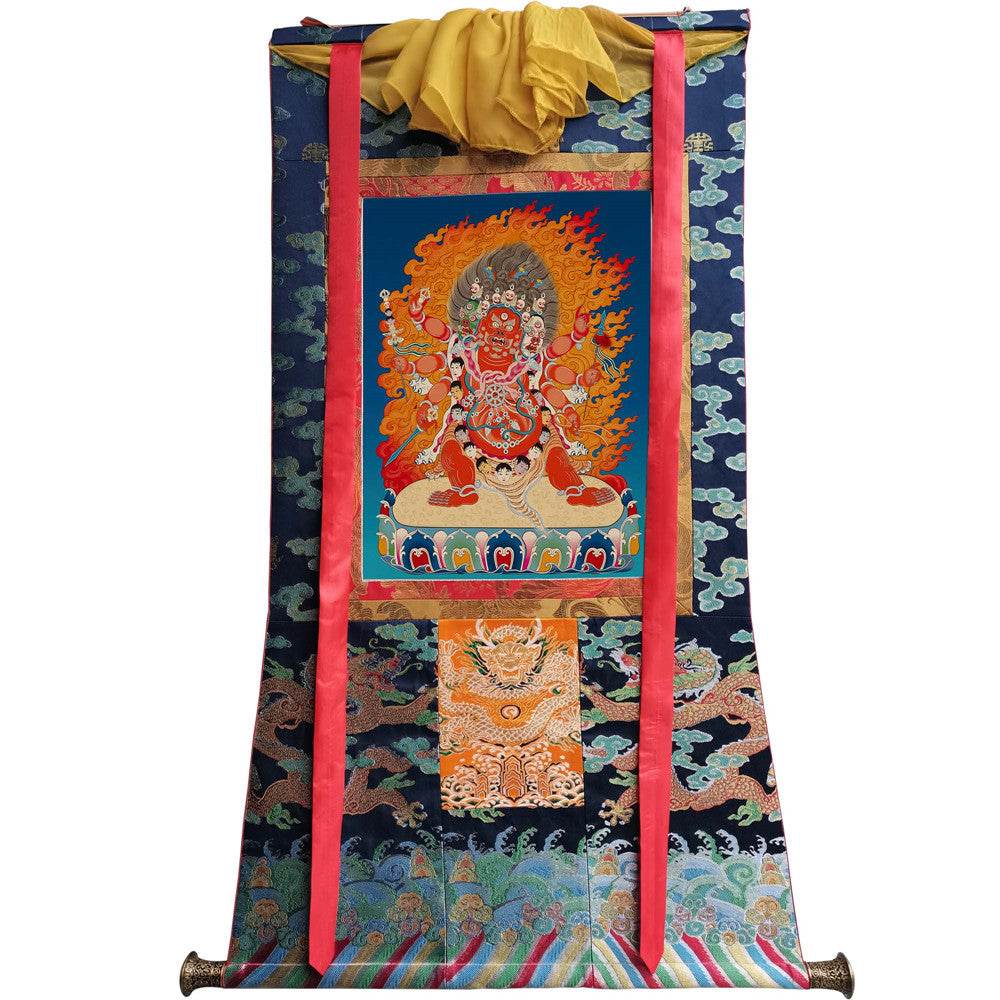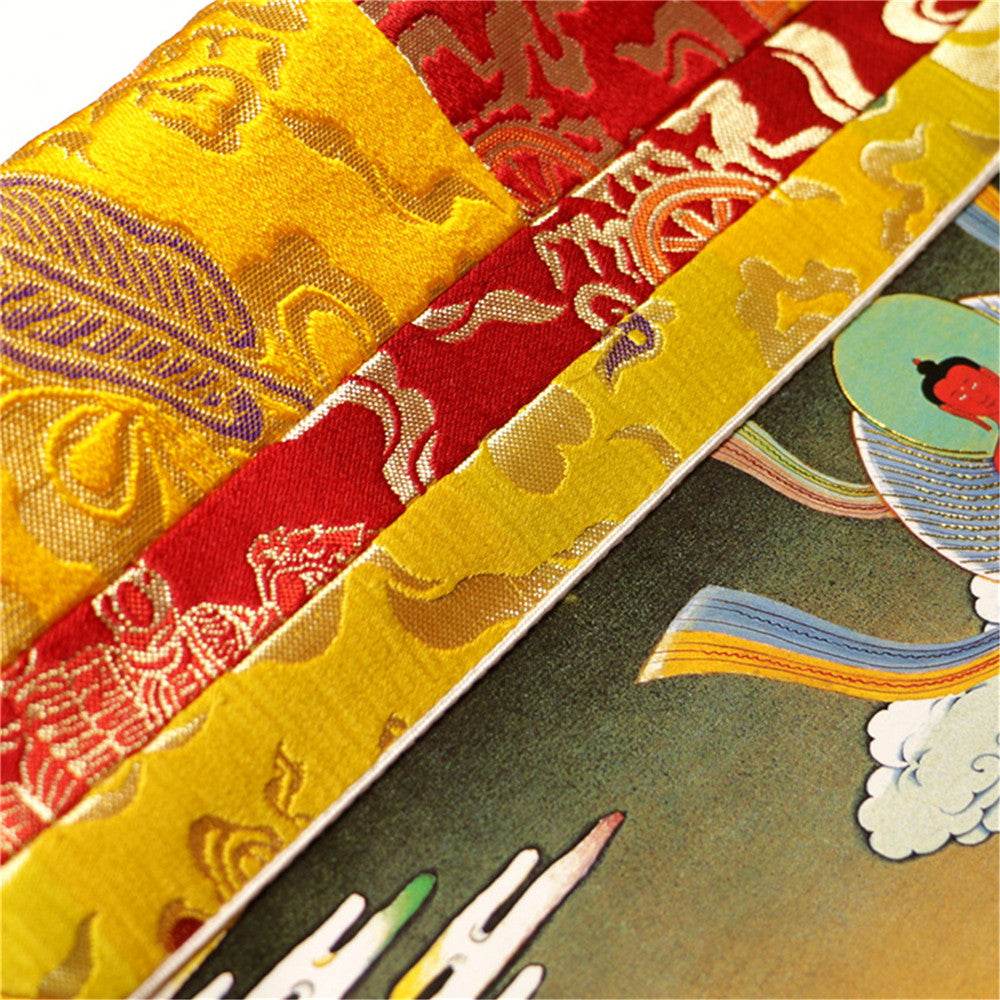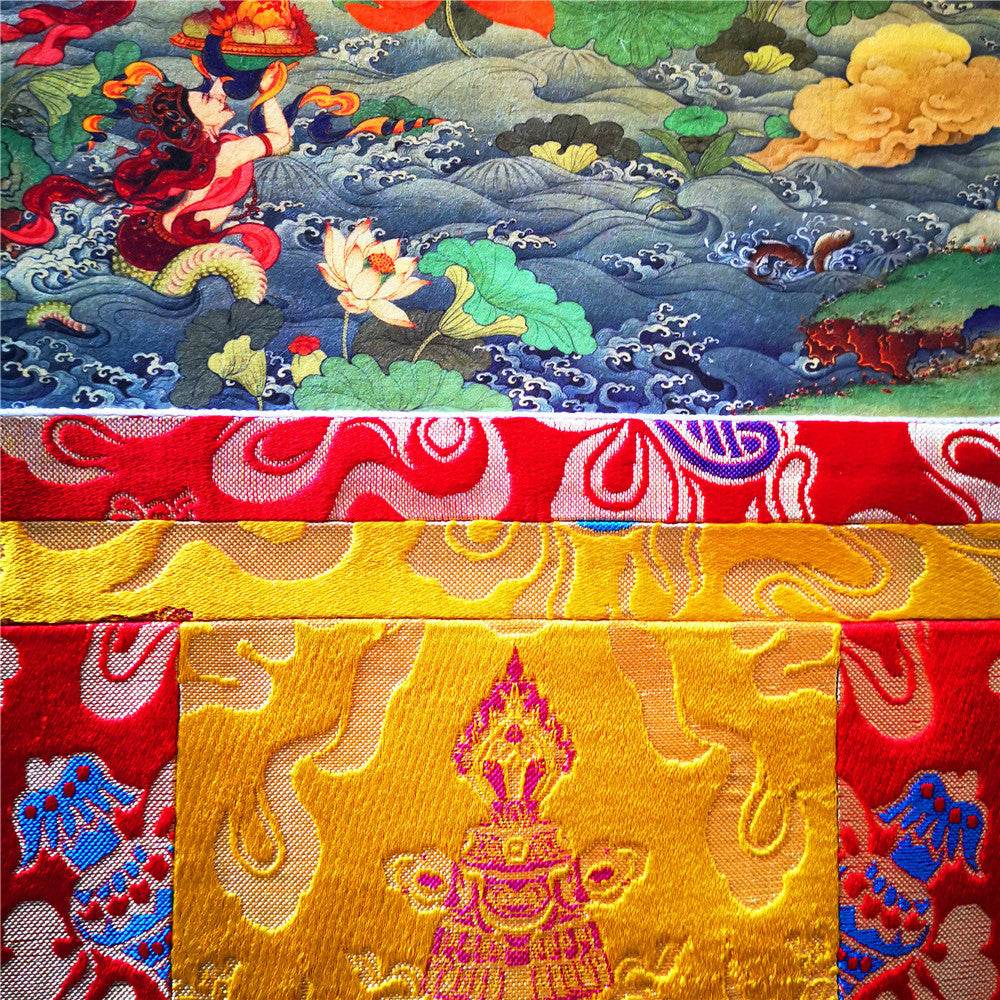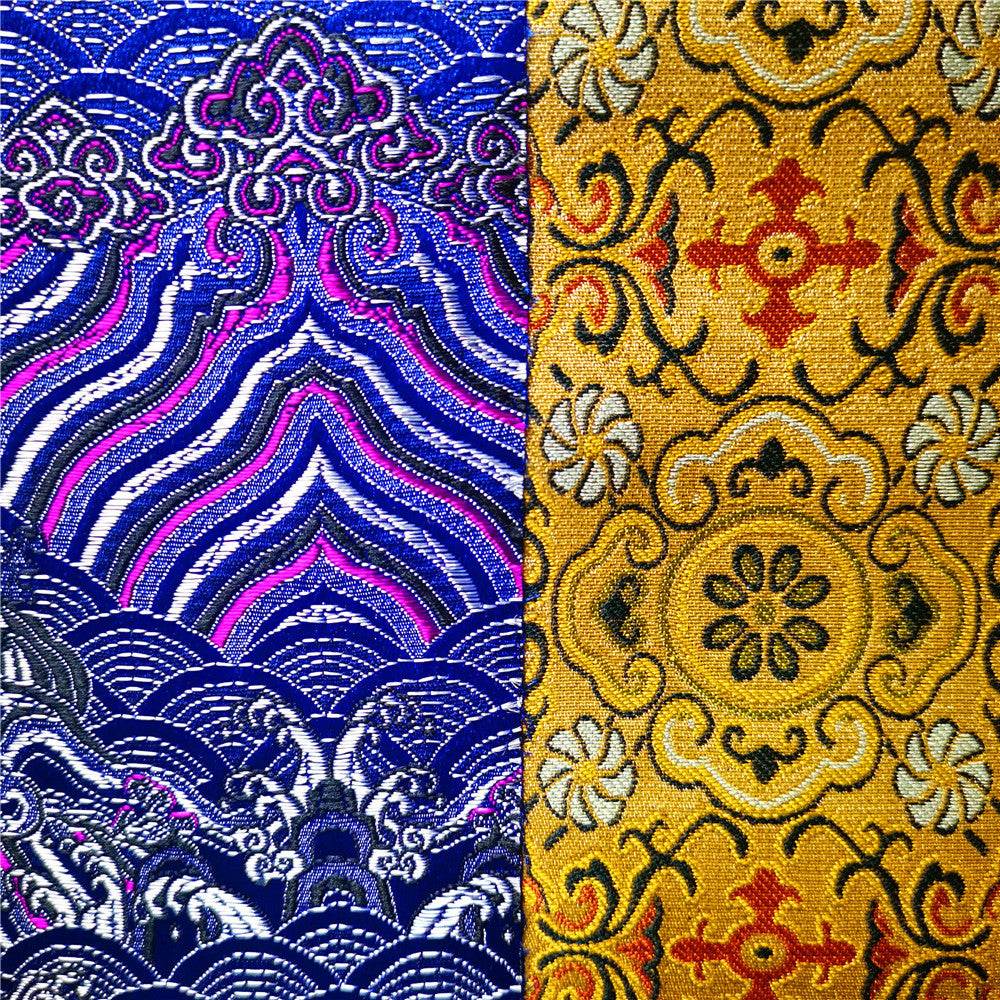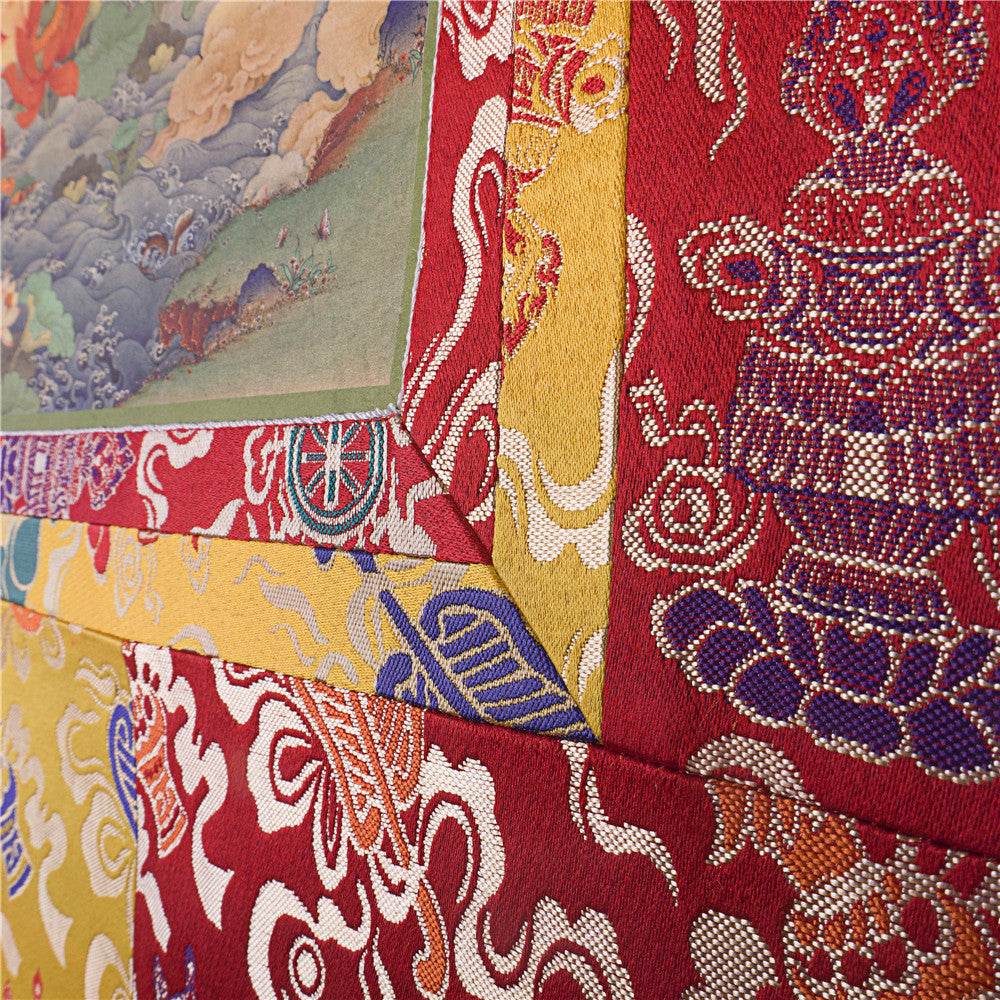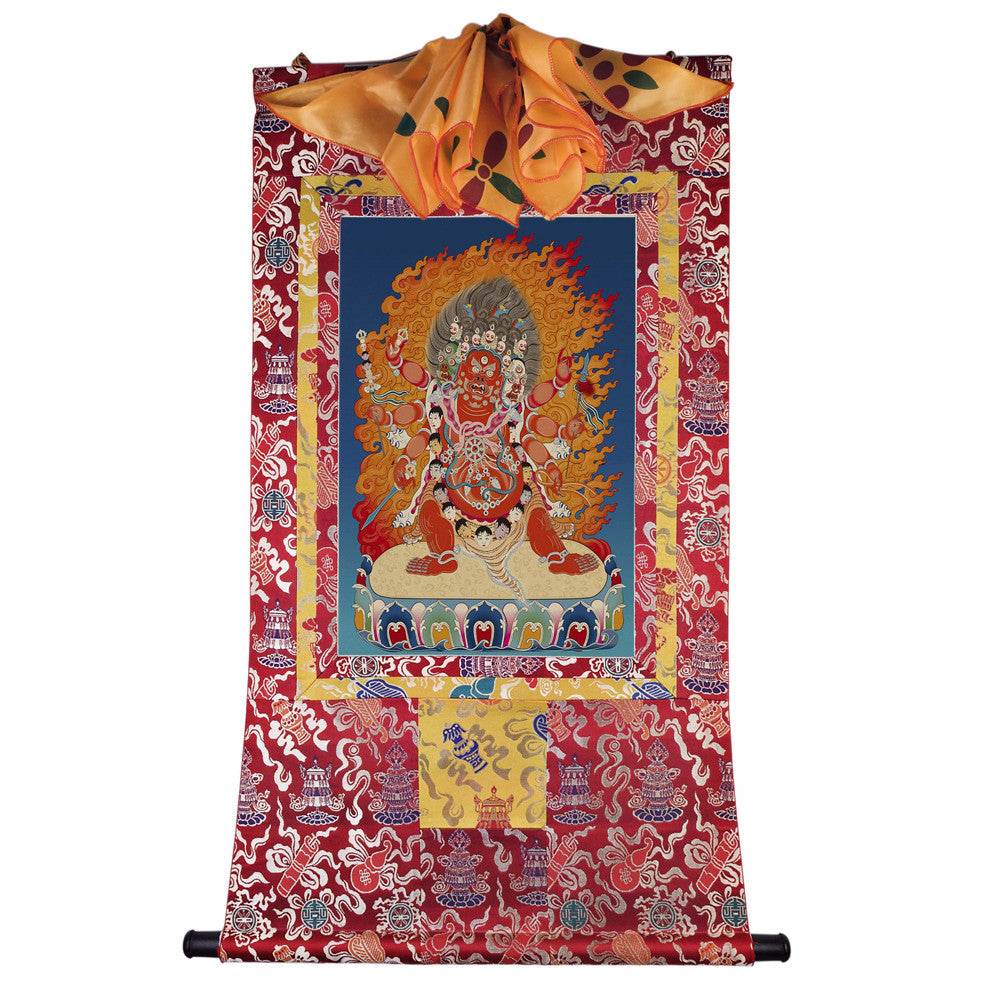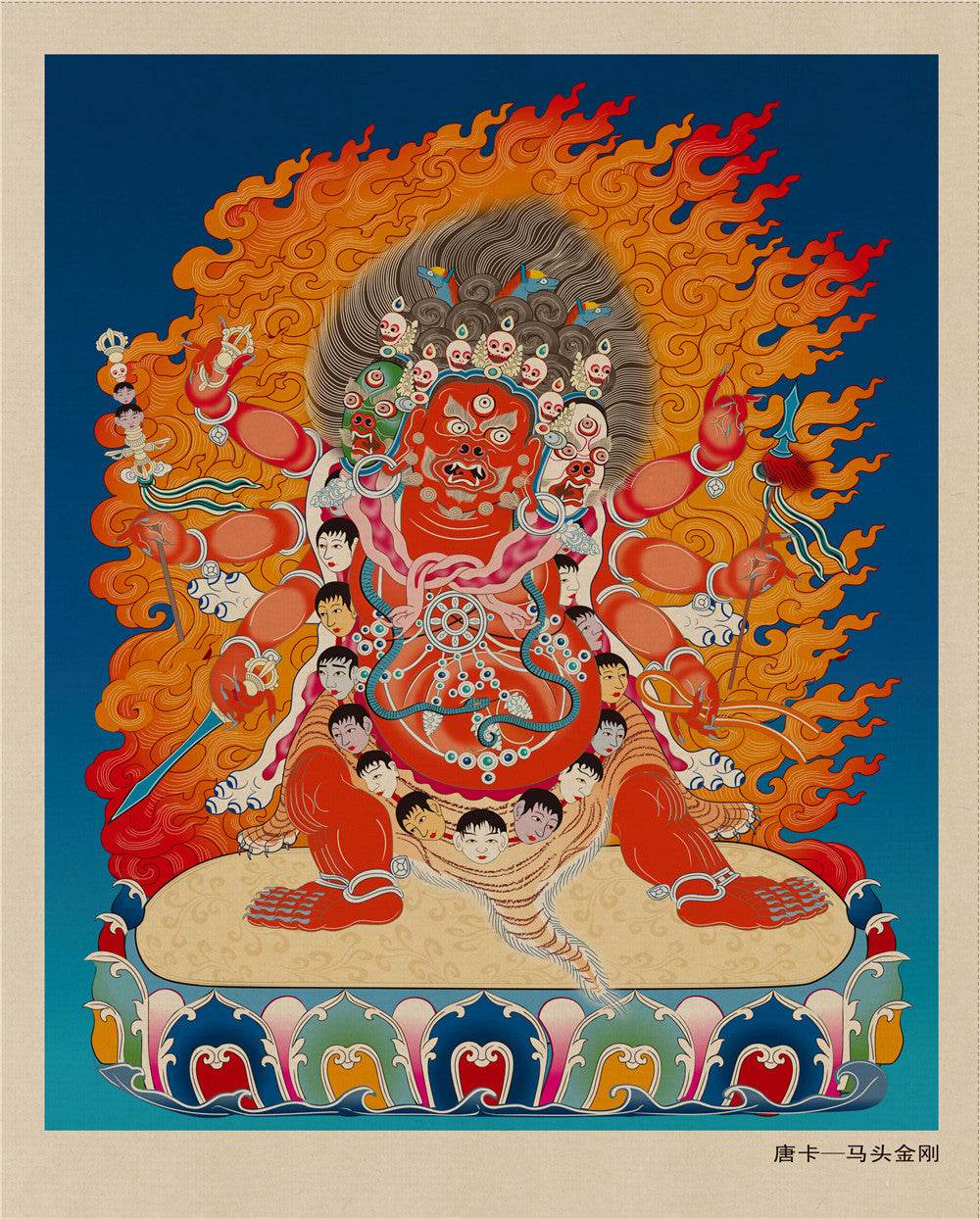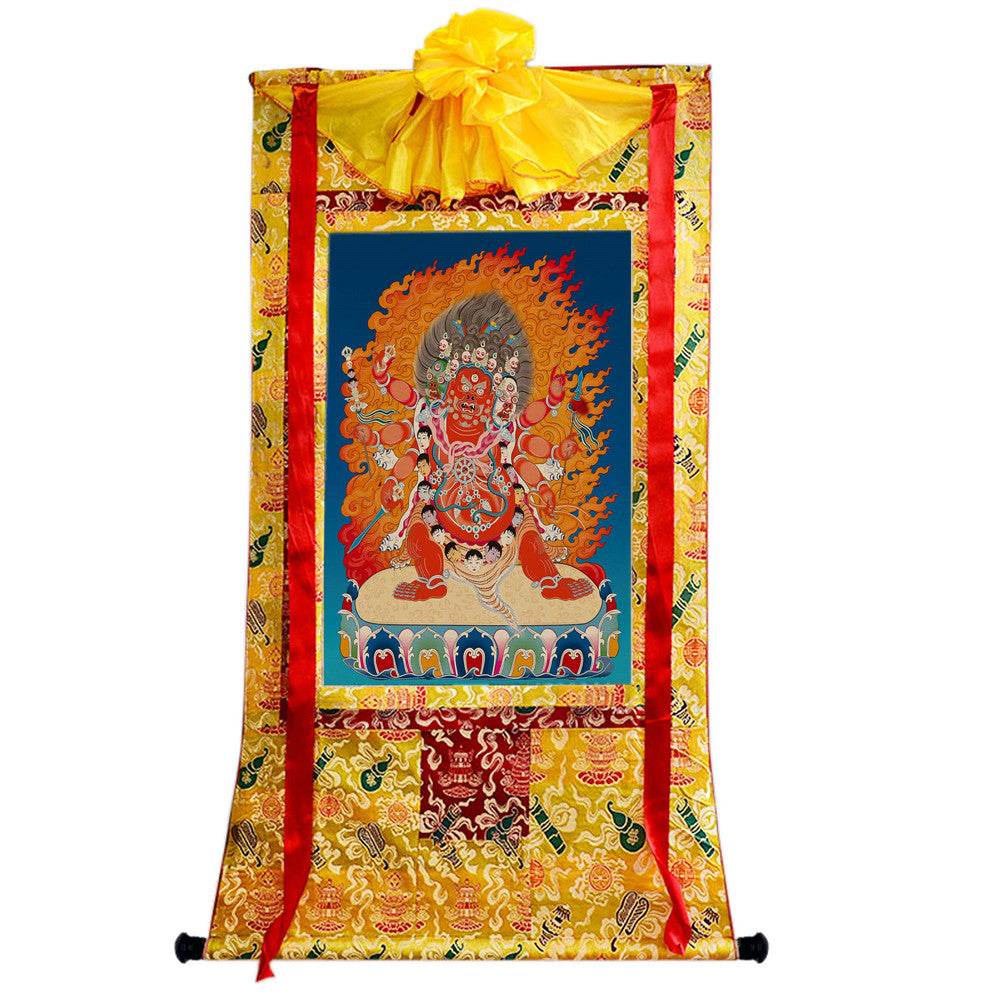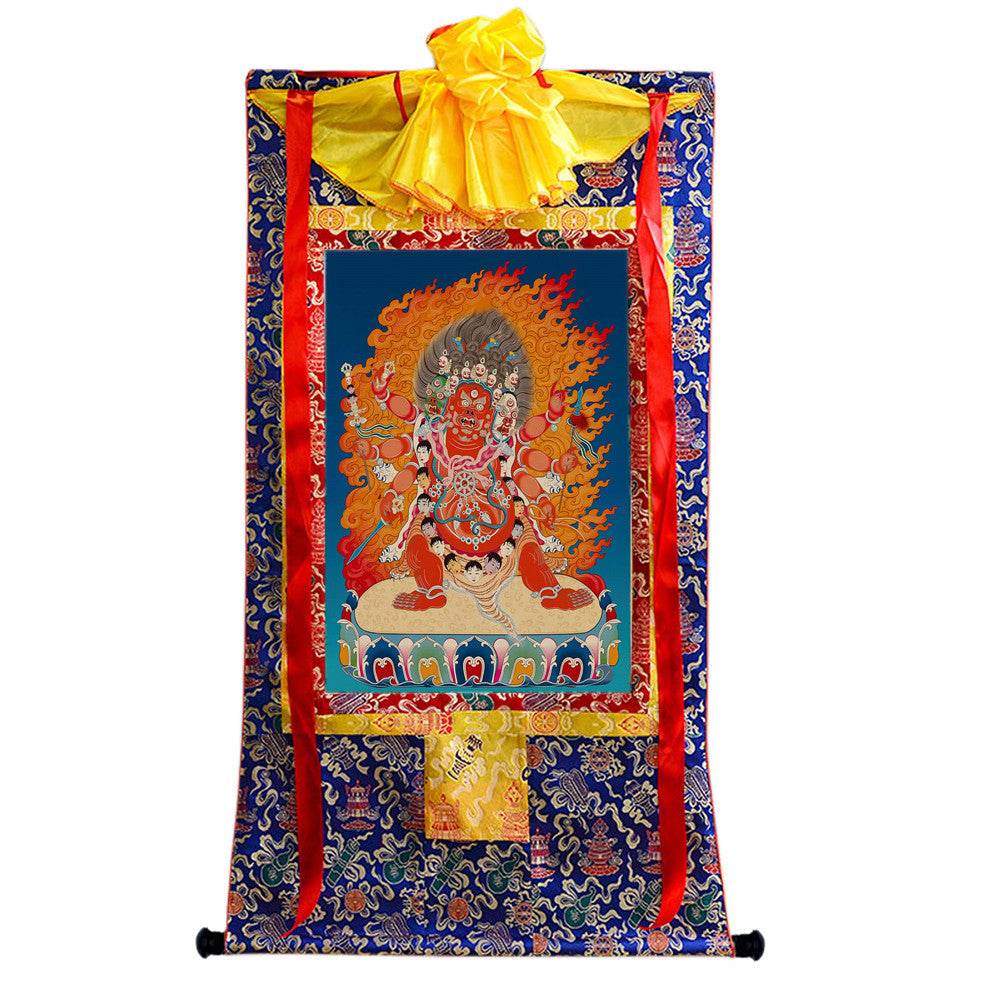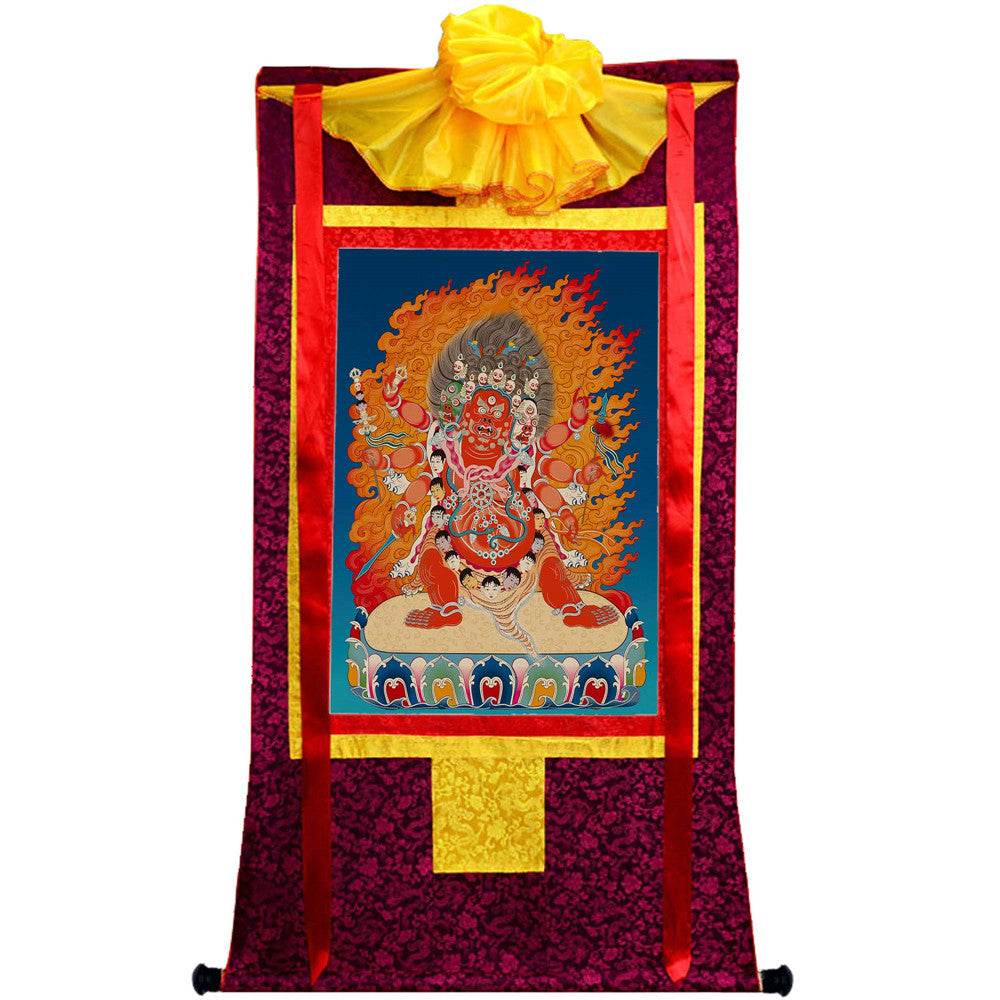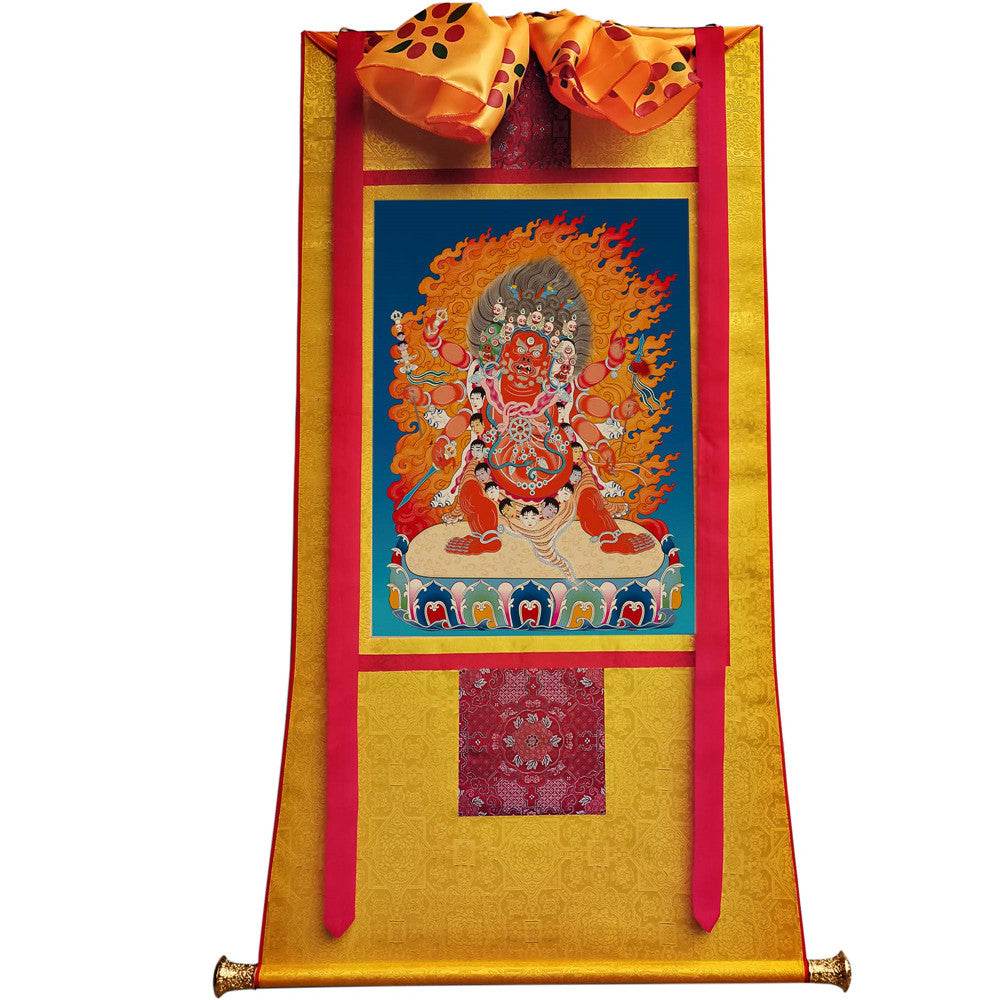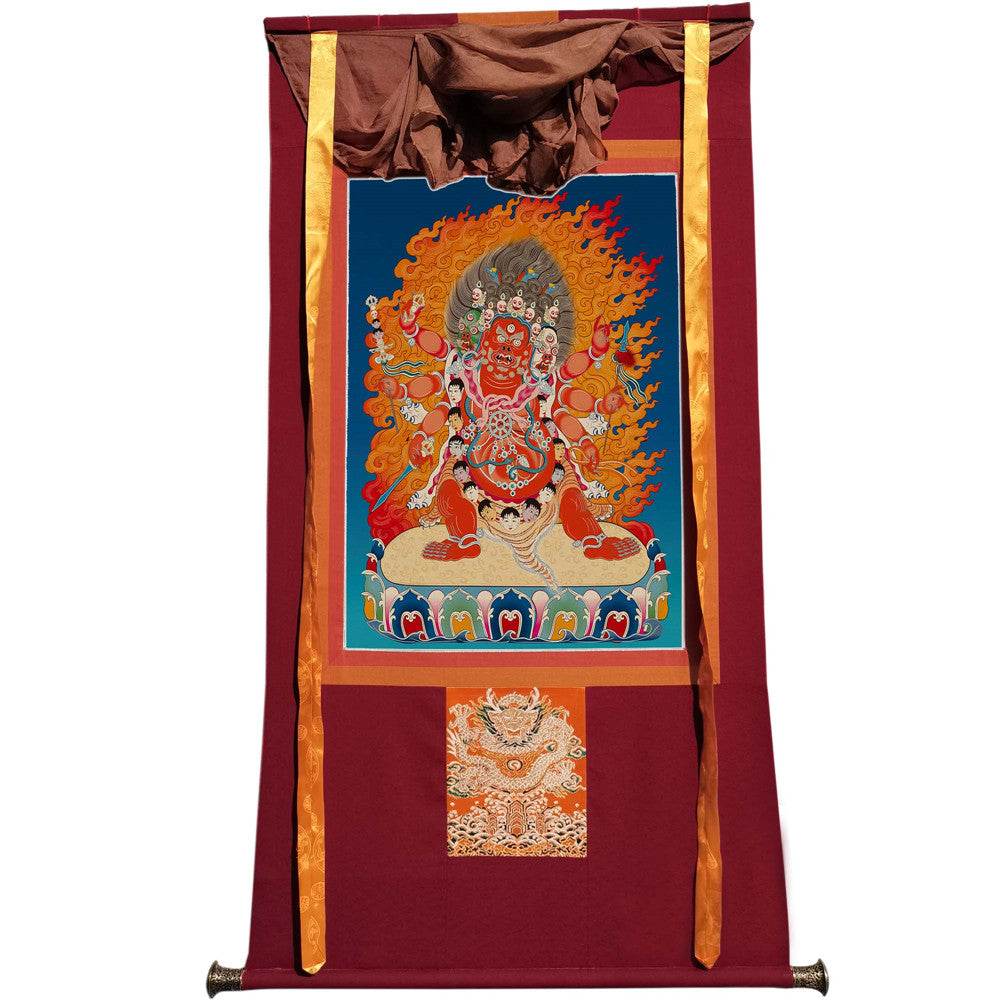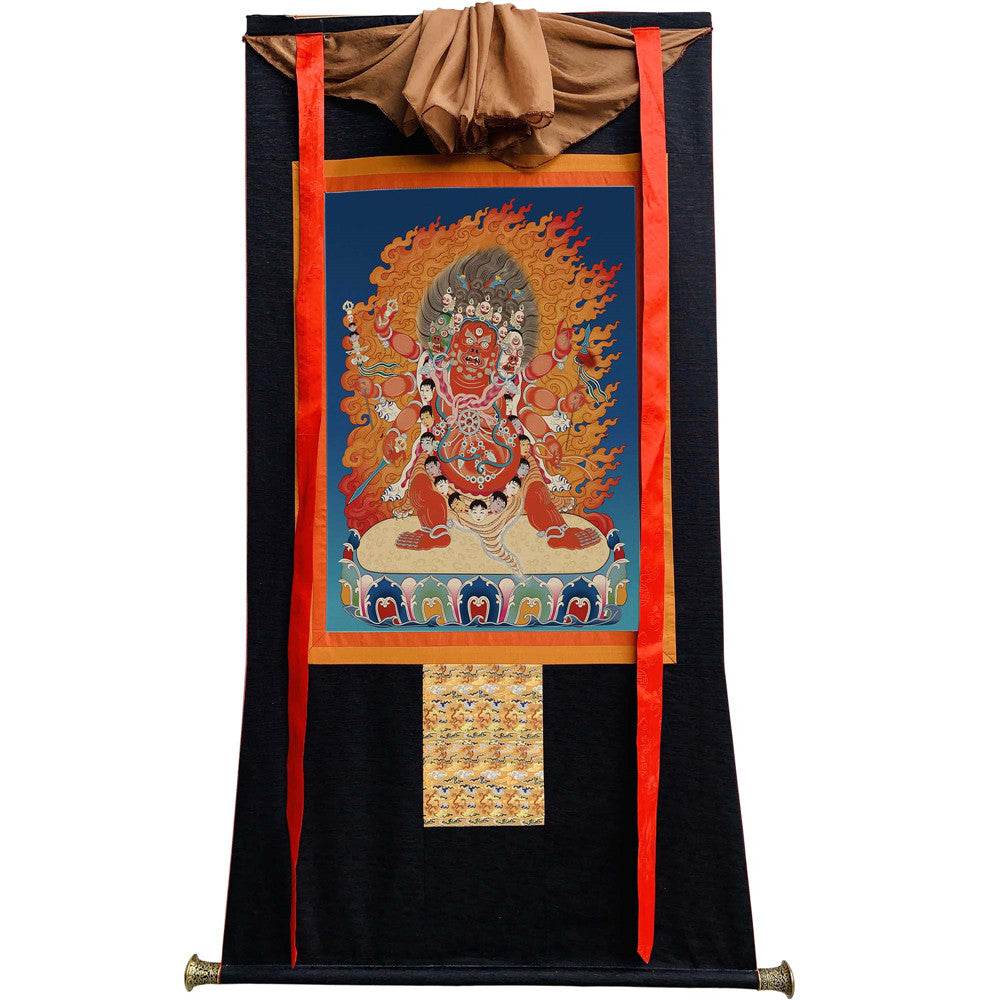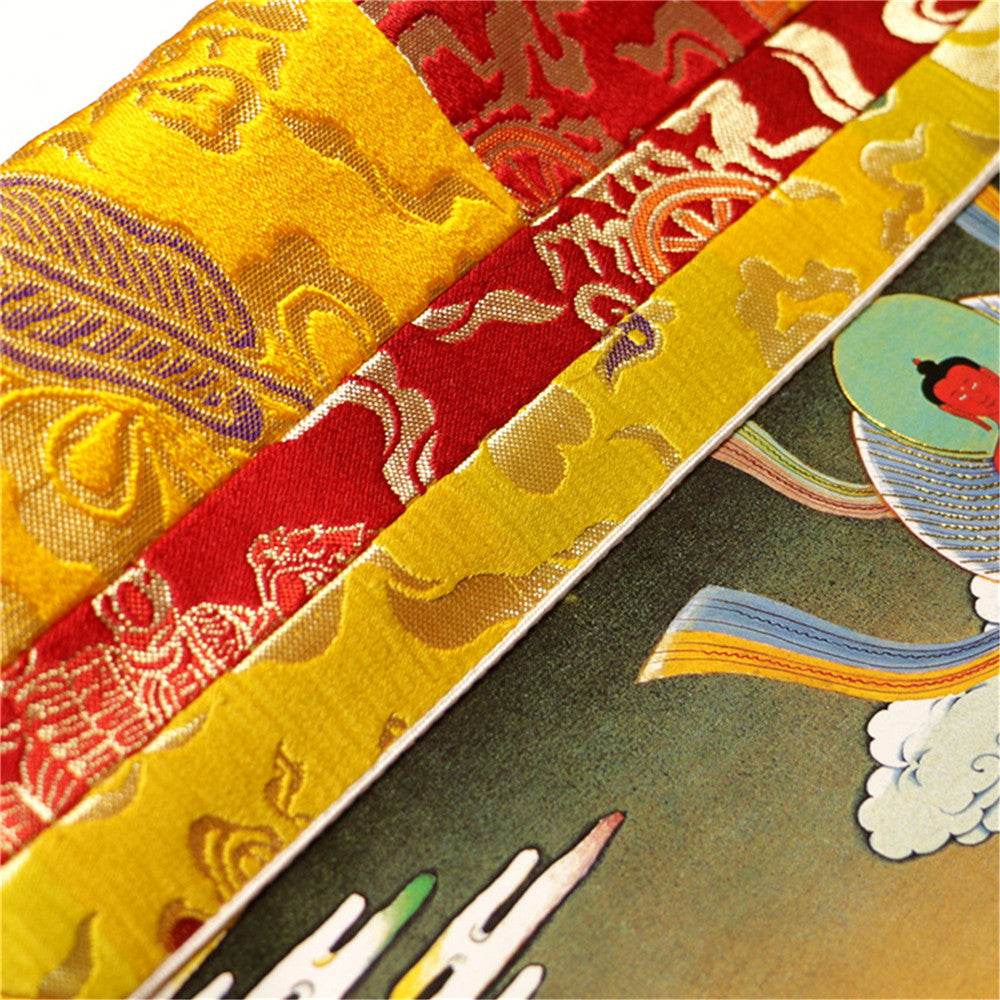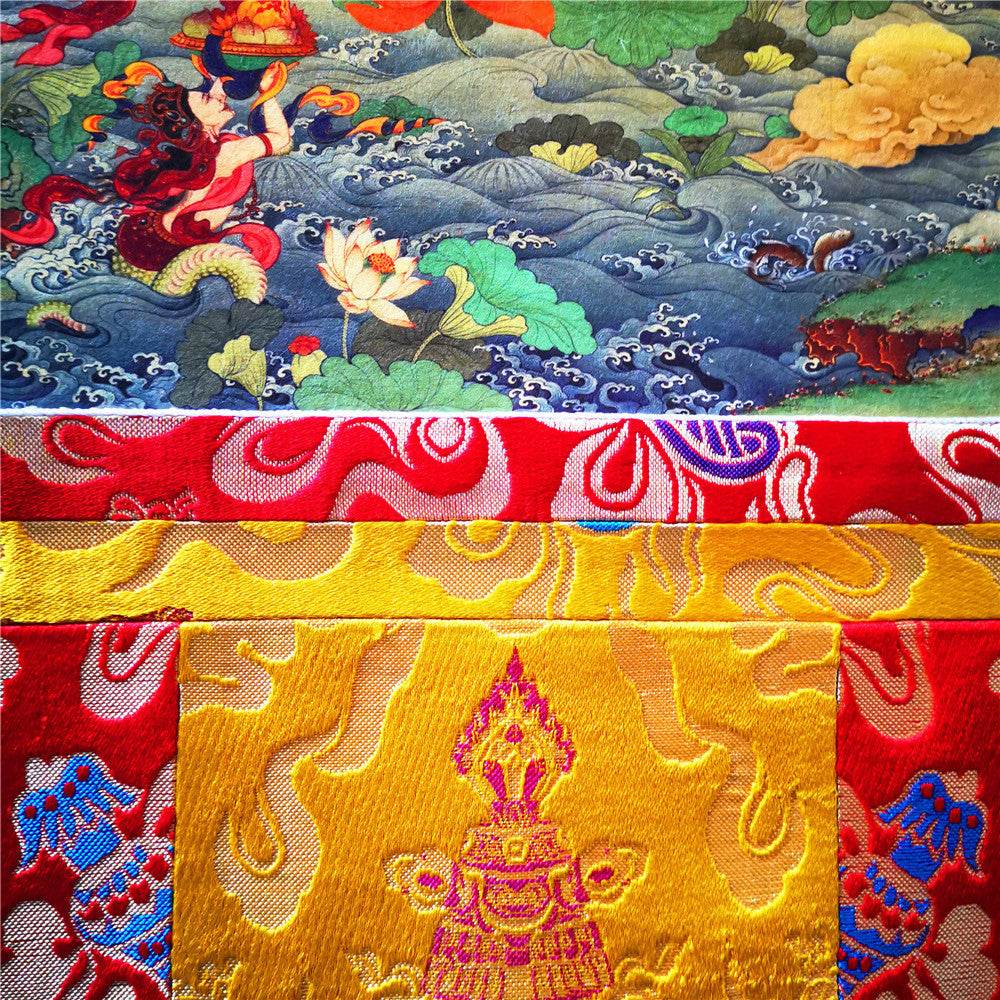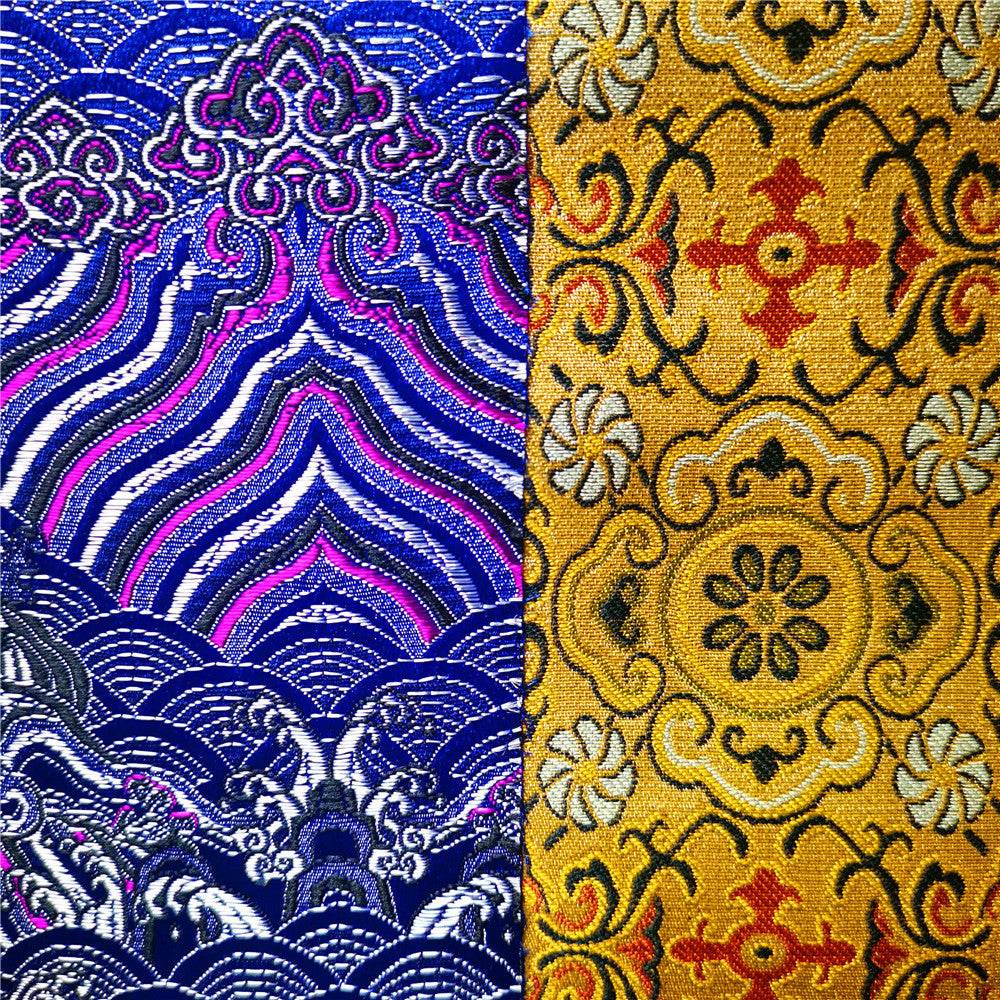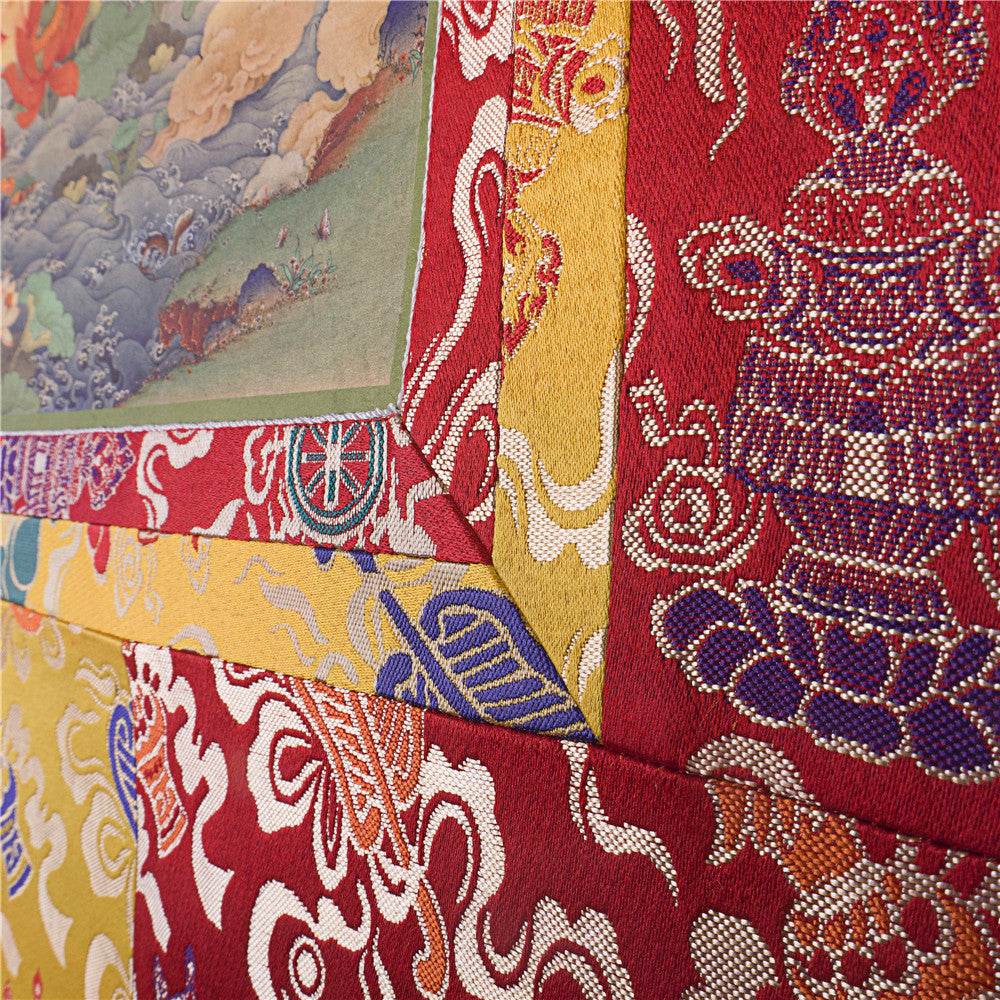Hayagriva
Hayagriva
Couldn't load pickup availability
❤This series thangka comes from the Kathok Monastery,made for belivers and blessed by lama.
The original version is from the 15th century,painted on cotton with ground mineral pigment.
The pattern is printed on Tibetan cotton,the frame is hand framed by Tibetan craftsmen.
❤DETAILS
Material:Mineral Pigment,Canvas,Cotton
Print type:giclee printed
The front is covered with silk to protect Thangka
With exquisite wooden painting shaft and lanyard
❤FRAME SIZE
Height:120cm / 47.2"
Top width:66cm / 26"
Bottom width:82cm / 32.3"
Core Size: 60cm(Height) 40cm(Width) * (about 23.6" * 15.8")
❤DIFFERENT FRAME COLORS for choose
There are a total of 8 different colors for you to choose, please select the color number when you purshace.
Frames of different colors may vary in size, please understand.
Hayagriva ("having the neck of a horse", IAST: Hayagrīva) is an important deity in Chinese, Tibetan and Japanese Buddhism. He originated as a yaksha attendant of Avalokiteśvara (Guanyin) in India. Appearing in the Vedas as two separate deities, he was assimilated into the ritual worship of early Buddhism and eventually was identified as a Wisdom King in Vajrayana Buddhism.
Hayagriva's imagery encapsulates his embodiment of a wrathful manifestation of compassion, symbolizing an unwavering determination to surmount internal obstacles and external challenges. Displaying attributes such as a scowling countenance with three penetrating eyes, a raised sword, and symbolic ornaments, Hayagriva conveys an intense resolve in his representation.
In Tibetan Buddhist practices, Hayagriva's significance is linked to his role in curing ailments, especially skin diseases like leprosy that are attributed to nāgas. Furthermore, his role extends to confronting potent adversaries, exemplified through his cosmic battles against the demon Rudra. In Chinese Buddhism, Hayagriva assumes the mantle of a Dharma protector (dharmapala), particularly associated with travel and transportation. This is evidenced by the practice of placing license plates before his image within temples, invoking safeguarding influences for vehicles and their passengers. In the context of Japanese Mahayana Buddhism, he emerges as a form of Avalokiteśvara, with his dominion extending over beings embodying animal-like mental states.
